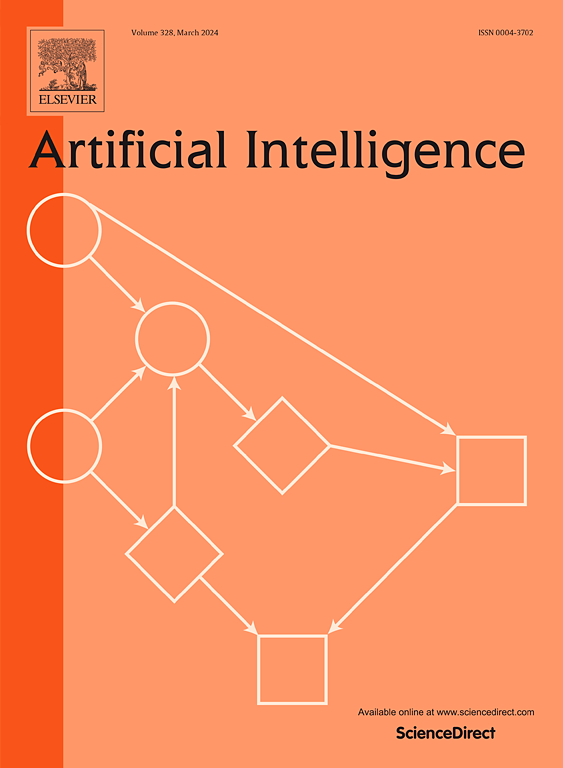通过调整和新规则导向估计潜在变量可能的因果效应
IF 4.6
2区 计算机科学
Q1 COMPUTER SCIENCE, ARTIFICIAL INTELLIGENCE
引用次数: 0
摘要
从观测数据中估计因果效应是人工智能的一项基本任务,在已知因果关系的情况下已经得到了广泛的研究。然而,在潜在混杂因素的存在下,只有一部分因果关系可以从观测数据中识别出来,其特征是部分祖先图(PAG),其中一些因果关系是不确定的。在这种情况下,因果效应通常是无法识别的,因为可能有超指数数量的潜在因果图与已识别的PAG一致,但与不同的因果效应相关。在本文中,我们的目标是在PAG内确定集合,即通过协变量调整确定指定变量X对另一个变量Y的可能因果效应集。我们开发了不需要列举任何因果图的第一个集合确定方法。此外,我们提出了将结构背景知识(BK)纳入PAG的两个新的取向规则,这有助于识别给定BK的附加因果关系。值得注意的是,我们表明这些规则可以进一步提高我们的集合确定方法的效率,因为在过程中某些转换的边可以被解释为BK,并使规则能够揭示进一步的因果信息。从理论上和经验上,我们证明了我们的集合确定方法可以产生与基于枚举的方法相同的结果,并且计算复杂度低于指数级。本文章由计算机程序翻译,如有差异,请以英文原文为准。
Estimating possible causal effects with latent variables via adjustment and novel rule orientation
Causal effect estimation from observational data is a fundamental task in artificial intelligence and has been widely studied given known causal relations. However, in the presence of latent confounders, only a part of causal relations can be identified from observational data, characterized by a partial ancestral graph (PAG), where some causal relations are indeterminate. In such cases, the causal effect is often unidentifiable, as there could be super-exponential number of potential causal graphs consistent with the identified PAG but associated with different causal effects. In this paper, we target on set determination within a PAG, i.e., determining the set of possible causal effects of a specified variable X on another variable Y via covariate adjustment. We develop the first set determination method that does not require enumerating any causal graphs. Furthermore, we present two novel orientation rules for incorporating structural background knowledge (BK) into a PAG, which facilitate the identification of additional causal relations given BK. Notably, we show that these rules can further enhance the efficiency of our set determination method, as certain transformed edges during the procedure can be interpreted as BK and enable the rules to reveal further causal information. Theoretically and empirically, we demonstrate that our set determination methods can yield the same results as the enumeration-based method with super-exponentially less computational complexity.
求助全文
通过发布文献求助,成功后即可免费获取论文全文。
去求助
来源期刊

Artificial Intelligence
工程技术-计算机:人工智能
CiteScore
11.20
自引率
1.40%
发文量
118
审稿时长
8 months
期刊介绍:
The Journal of Artificial Intelligence (AIJ) welcomes papers covering a broad spectrum of AI topics, including cognition, automated reasoning, computer vision, machine learning, and more. Papers should demonstrate advancements in AI and propose innovative approaches to AI problems. Additionally, the journal accepts papers describing AI applications, focusing on how new methods enhance performance rather than reiterating conventional approaches. In addition to regular papers, AIJ also accepts Research Notes, Research Field Reviews, Position Papers, Book Reviews, and summary papers on AI challenges and competitions.
 求助内容:
求助内容: 应助结果提醒方式:
应助结果提醒方式:


